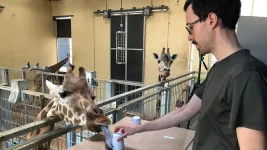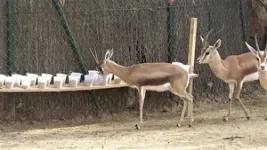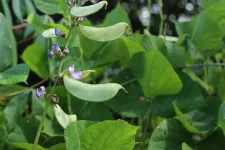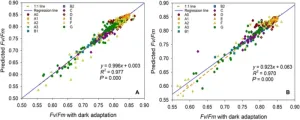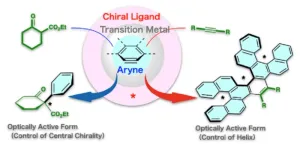(Press-News.org) Innovating, i.e. the ability to find solutions to new problems or innovative solutions to known problems, it provides crucial benefits for the adaptation and the survival of human beings as well as for animals. What are the characteristics that make specific species or animals to be innovative? A study by the University of Barcelona has analysed this cognitive skill in ungulates, a group of mammals such as dromedaries, horses and goats, characterized by walking on the tip of their toes or hooves. The results show that those individuals that are less integrated in the group and those that are more afraid of new objects were the best at solving a challenge posed by the researchers: opening a food container.
“These findings are in line with recent scientific literature about wild and captive primates, and they show that less socially integrated individuals are less likely to obtain resources such as food, but they are more likely to overcome neophobia —aversion to new things—, to improve their situation. Also, this confirms that ungulates are a promising taxon to test evolutionary theories with a comparative approach”, says Álvaro López Caicoya, predoctoral researcher at the Faculty of Psychology and the Institute of Neurosciences (UBneuro) of the UB and first author of the article.
Regarding this issue, the researcher states that most comparative studies on the evolution of cognitive abilities have been conducted on birds and primates, but that evolutionary pressures to which these are subjected may be different from those of other species. Therefore, including other taxa —such as ungulates— in future studies is “essential for understanding the limits and the generalization of specific evolutionary hypotheses”.
The study, published in the journal Proceedings of the Royal Society B, includes the participation of Montserrat Colell, lecturer at the Faculty of Psychology and researcher at UBneuro, together with other experts from the Max Planck Institute for Evolutionary Anthropology and the University of Leipzig (Germany).
An experiment with a hundred animals in captivity
The experiment was carried out on 111 animals from 13 different species, among which there were goats, dromedaries, Przewalki horses, giraffes, llamas, sheep and deer, among other ungulates, which lived in captivity in the zoos of Barcelona, Barbent (France), Nuremberg and Leipzig (Germany). Each of these groups of animals had to deal with a test, consisting opening a type of container they did not know and which contained their favourite food.
All the animals had previously been classified according to several aspects that could have an impact on their ability to solve problems, such as the fear of new objects, the diet and the social integration in the group. The aim was to identify the individual and socio-ecological characteristics of the animals that were most successful when working on the challenge the researchers had prepared.
Dromedaries and goats, the most skilled
The participation in the experiment varied between species: while 100% of the dromedaries approached the container, only 33% of the sheep did. But the species that showed the most interaction were the domesticated ones and those with a greater fission-fusion dynamic (those belonging to complex groups that go together or separate depending on the environment and the time). However, these characteristics were not indicators of a higher ability to solve the challenge they encountered. “The domestication process could have specifically selected specifically the traits and features that facilitate interactions with humans (and human artefacts), but not the cognitive skills that allow for a more efficient problem solving”, note the researchers.
Finally, out of the hundred animals that participated in the experiment, only 36% could open the container and access the food at least once. “Species with a higher percentage of individuals that escaped were dromedaries and goats, with 86% and 69%, respectively”, highlights Álvaro López Caicoya.
In successful cases, the researchers assessed the diversity of resources used to solve the challenge. “Most of them opened the containers using their nose, muzzle or lips; only nine out of these forty animals used more than one strategy to solve the challenge, such as lifting the cover gently with their lips or throwing the cup to the floor”.
A pioneering study
This paper is a pioneering study in the research on the ungulates’ cognition, since “there are barely a handful of similar studies” with these species. “Traditionally, they have been considered cattle and their behaviour or their understating have not been of interest. Thanks to this and other studies, we are starting to see these are animals with complex behaviours which that are worth studying”, stresses Álvaro López Caicoya.
In this sense, the UB researcher highlights the need for more studies that include more species and individuals, both in captivity and wild ones, and more complex challenges, to generalize the findings. “The ungulates are an exceptional model for the comparative research and this study is only a first approach to the cognition of these species”, he concludes.
END
Are the least social animals the most innovative?
Dromedaries and goats, the most skilled
2023-04-28
ELSE PRESS RELEASES FROM THIS DATE:
New bean genome unveils potential to boost food security and resilience in drought-prone regions
2023-04-28
NAIROBI, Kenya, 20 April 2023_An international team of researchers, led by Africans, has fully sequenced the genome of a climate resilient bean that could bolster food security in drought-prone regions.
The sequencing of the hyacinth bean or ‘lablab bean’ [Lablab purpureus] paves the way for wider cultivation of the crop, bringing nutritional and economic benefits, as well as much needed diversity to the global food system.
The plant is native to Africa and is cultivated throughout the tropics producing highly nutritious beans, which are used for food ...
El Niño–Southern Oscillation correlates well with following-summer cloud-to-ground lightning in China
2023-04-28
Large-scale circulation anomalies are a key factor in the transportation of water vapor and changes in climate. For tropical and subtropical regions, an atmospheric circulation field not only determines the characteristics of the weather situation but also influences the atmospheric circulation in the middle and high latitudes, as well as the global climate, through the transport of energy and angular momentum. At the same time, whilst lightning can serve as a global tropical “thermometer” and an indicator of water vapor in the upper troposphere, the driving role of the circulation situation for it needs to be further analyzed.
In a paper recently ...
An artificial intelligence method for rapid plant phenotyping under complex conditions
2023-04-28
During photosynthesis, the green pigment chlorophyll in algae and plants absorbs most of the energy from incoming light. Chlorophyll gets excited and transfers this energy to the energy-harvesting protein complexes photosystem I (PSI) and II (PSII). However, some of this energy dissipates as heat or chlorophyll a fluorescence (ChlF).
Changes in the environment or plant physiology that affect PSII also alter ChlF, which can therefore be used as a fast, sensitive, and non-destructive indicator of PSII status. Indeed, ChlF is a powerful tool for assessing multiple aspects of photosynthesis. Though ChlF measurements ...
Tip sheet: Studies on behavioral concerns tied to a commonly used chemical and youth COVID-19 vaccination rates among Johns Hopkins research to be featured at National Pediatrics Meeting
2023-04-28
FOR IMMEDIATE RELEASE
What: Pediatric Academic Societies (PAS) 2023 Meeting
When: April 27 to May 1
Where: Walter E. Washington Convention Center (801 Mt Vernon Pl NW, Washington, DC 20001)
Johns Hopkins Children’s Center researchers will present on numerous topics during the PAS 2023 meeting, including:
System-Level Approach to Improve First COVID-19 Vaccine Dose Uptake in a Primary Care Setting: The Value of Health Educators
Monday, May 1, 1 to 2:30 p.m. Eastern time
Convention Center: 204 C
Oral Abstract
COVID-19 vaccination rates among youth ...
Study shines light on impact of environment on neurocognitive outcomes
2023-04-28
To gain a clearer understanding of the differences between childhood cancer patients when it comes to the impact of radiation therapy on cognition, scientists at St. Jude Children’s Research Hospital studied the effect of their environment. Their work showed that children with supportive environments fared better than children living in neighborhoods with economic hardship. Those in areas with greater economic hardship had worse baseline and long-term cognitive outcomes. The results imply that policies and resources providing support at a neighborhood level ...
6% of nations provide for citizens in just, sustainable manner
2023-04-28
COLUMBUS, Ohio – Researchers at The Ohio State University have developed a framework for quantifying how well countries around the world are doing at providing adequate food, energy and water to their citizens without exceeding nature’s capacity to meet those needs.
They found that only 6% of 178 countries provide for all their citizens in an ecologically sustainable way in both carbon sequestration and water consumption.
The study found that while 67% of nations operate safely and sustainably in regard to water use, only 9% do in regard to carbon sequestration, ...
IVI begins clinical development of DuoChol oral cholera vaccine
2023-04-28
The International Vaccine Institute, an international organization with a mission to discover, develop, and deliver safe, effective, and affordable vaccines for global health, began clinical development of DuoChol, a new low-cost oral cholera vaccine (OCV) in capsule form. With funding support from the Wellcome Trust and the Swedish government, IVI is preparing to conduct a Phase I clinical trial of the vaccine in Sweden.
Scientists at the University of Gothenburg developed DuoChol, a dry formulation inactivated bacterial whole cell/cholera toxin B subunit OCV with a similar composition as the world’s first WHO-prequalified OCV, DUKORAL®. ...
Astronomers detect the closest example yet of a black hole devouring a star
2023-04-28
Once every 10,000 years or so, the center of a galaxy lights up as its supermassive black hole rips apart a passing star. This “tidal disruption event” happens in a literal flash, as the central black hole pulls in stellar material and blasts out huge amounts of radiation in the process.
Astronomers know of around 100 tidal disruption events (TDE) in distant galaxies, based on the burst of light that arrives at telescopes on Earth and in space. Most of this light comes from X-rays and optical radiation.
MIT astronomers, tuning past the conventional X-ray and UV/optical bands, have discovered a new ...
Old dogs with dementia sleep less deeply, just like people with Alzheimer’s
2023-04-28
In people with Alzheimer’s, the earliest symptoms are commonly disruptions in sleep rhythms. These include daytime sleepiness, showing agitation or confusion around dusk, staying awake longer, and waking up often at night. These changes are thought to result from damage to sleep-regulating areas in the brain. Alzheimer patients tend to spend less time in both REM (rapid eye movement) sleep, in which most dreaming occurs, and non-REM (NREM) sleep. But they show the greatest reduction in so-called slow-wave sleep (SWS) – a stage of non-dreaming deep sleep, characterized by slow ‘delta’ brain waves (0.1 to ...
Review article on asymmetric synthesis using arynes
2023-04-28
Arynes, synthetic intermediates in which a portion of the benzene ring is a triple bond, have been applied in various organic molecular transformations and have long been of interest to chemists as extremely useful compounds. Furthermore, with the advancement in aryne chemistry, the development of “asymmetric synthesis” reactions of arynes, which are expected to increase the efficiency of the synthesis of compounds with complex steric structures and facilitate the creation of new compounds, has attracted increasing attention.
However, asymmetric synthesis based on arynes, which are extremely reactive and unstable, presents several challenges. Therefore, asymmetric ...
LAST 30 PRESS RELEASES:
Heart-brain connection: international study reveals the role of the vagus nerve in keeping the heart young
Researchers identify Rb1 as a predictive biomarker for a new therapeutic strategy in some breast cancers
Survey reveals ethical gaps slowing AI adoption in pediatric surgery
Stimulant ADHD medications work differently than thought
AI overestimates how smart people are, according to HSE economists
HSE researchers create genome-wide map of quadruplexes
Scientists boost cell "powerhouses" to burn more calories
Automatic label checking: The missing step in making reliable medical AI
Low daily alcohol intake linked to 50% heightened mouth cancer risk in India
American Meteorological Society announces Rick Spinrad as 2026 President-Elect
Biomass-based carbon capture spotlighted in newly released global climate webinar recording
Illuminating invisible nano pollutants: advanced bioimaging tracks the full journey of emerging nanoscale contaminants in living systems
How does age affect recovery from spinal cord injury?
Novel AI tool offers prognosis for patients with head and neck cancer
Fathers’ microplastic exposure tied to their children’s metabolic problems
Research validates laboratory model for studying high-grade serous ovarian cancer
SIR 2026 delivers transformative breakthroughs in minimally invasive medicine to improve patient care
Stem Cell Reports most downloaded papers of 2025 highlight the breadth and impact of stem cell research
Oxford-led study estimates NHS spends around 3% of its primary and secondary care budget on the health impacts of heat and cold in England
A researcher’s long quest leads to a smart composite breakthrough
Urban wild bees act as “microbial sensors” of city health.
New study finds where you live affects recovery after a hip fracture
Forecasting the impact of fully automated vehicle adoption on US road traffic injuries
Alcohol-related hospitalizations from 2016 to 2022
Semaglutide and hospitalizations in patients with obesity and established cardiovascular disease
Researchers ‘listen in’ to embryo-mother interactions during implantation using a culture system replicating the womb lining
How changing your diet could help save the world
How to make AI truly scalable and reliable for real-time traffic assignment?
Beyond fragmented markets: A new framework for efficient and stable ride-pooling
Can shape priors make road perception more reliable for autonomous driving?
[Press-News.org] Are the least social animals the most innovative?Dromedaries and goats, the most skilled
